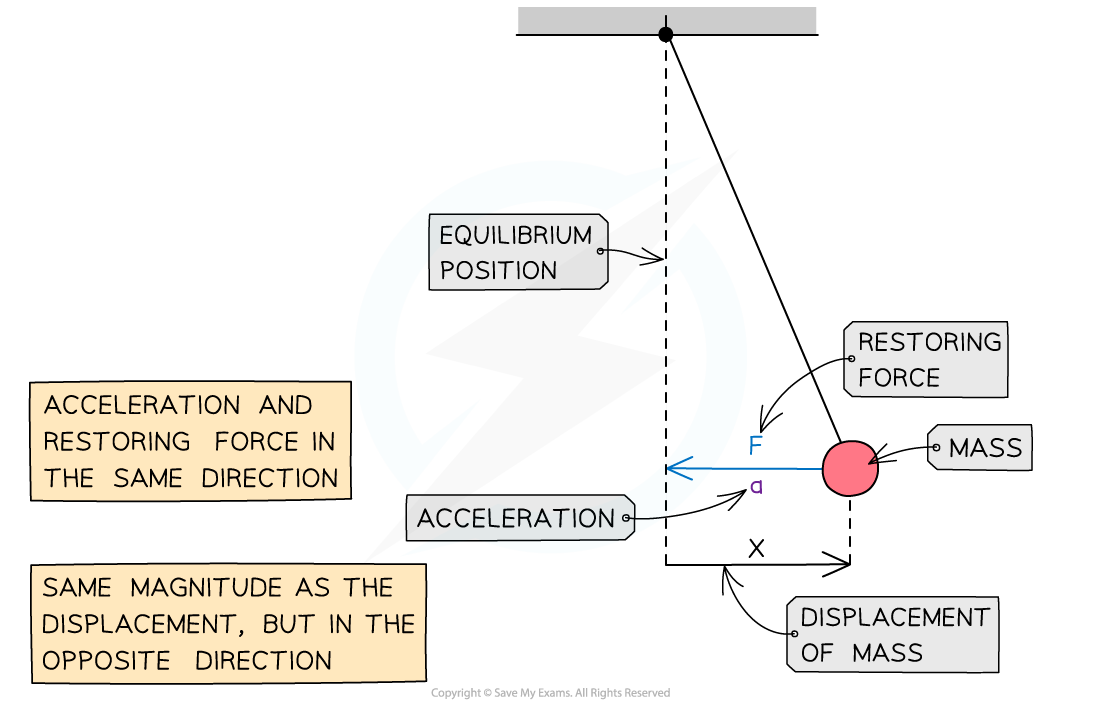Conditions for Simple Harmonic Motion (OCR A Level Physics): Revision Note
Exam code: H556
Simple Harmonic Motion
Simple harmonic motion (SHM) is a specific type of oscillation
An oscillation is said to be SHM when:
The acceleration of a body is proportional to its displacement, but acts in the opposite direction
Acceleration
and displacement
can be represented by the defining equation of SHM:
The two conditions required for an object to be in simple harmonic motion are therefore:
The acceleration is proportional to the displacement
The acceleration is in the opposite direction to the displacement

Force, acceleration and displacement of a pendulum in SHM
Worked Example
Explain why a person jumping on a trampoline is not an example of simple harmonic motion.
Answer:
Step 1: Recall the conditions for simple harmonic motion
The conditions required for SHM:
The restoring force/acceleration is proportional to the displacement
The restoring force/acceleration is in the opposite direction to the displacement
Step 2: Consider the forces in the scenario given
When the person is not in contact with the trampoline, the restoring force is equal to their weight, which is constant
The value of their weight does not change, even if they jump higher (increase displacement)
Step 3: Write a concluding sentence
The restoring force on the person is not proportional to their distance from the equilibrium position, therefore, this scenario does not fulfil the conditions for SHM

Unlock more, it's free!
Did this page help you?